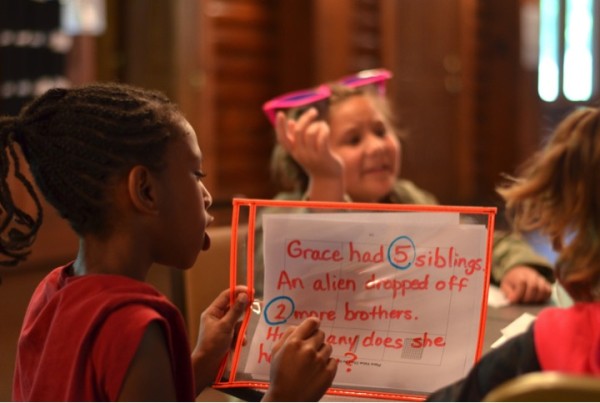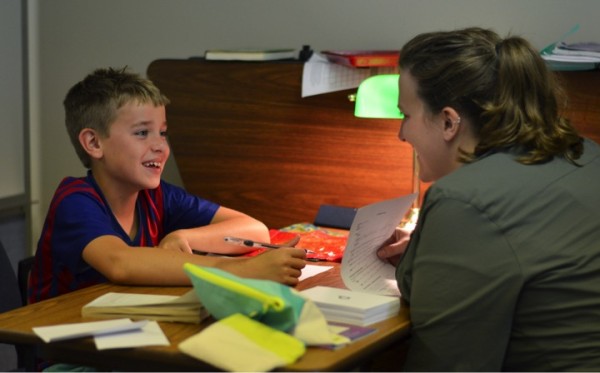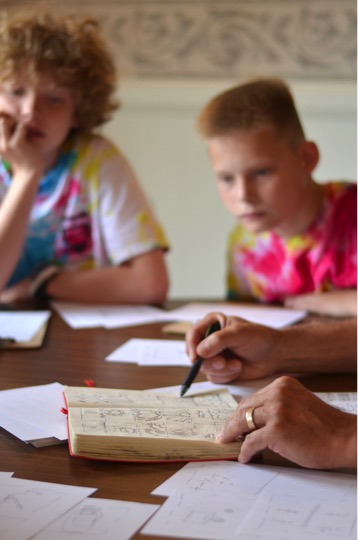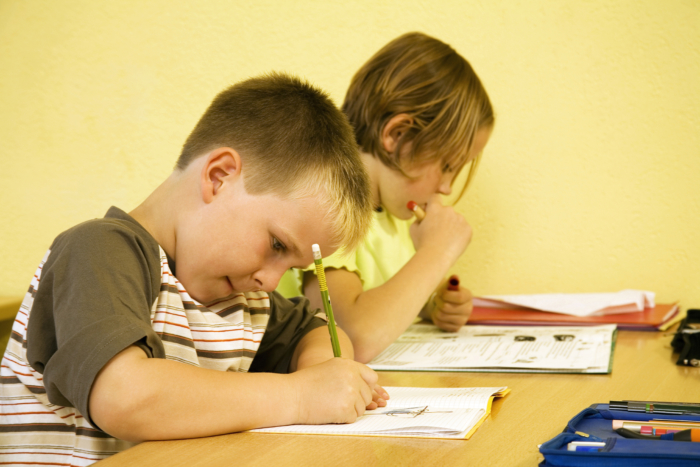 Summer is fading, and kids are now hopping on the bus to go back to school. And with every new school year comes a unique and exciting set of challenges.
Summer is fading, and kids are now hopping on the bus to go back to school. And with every new school year comes a unique and exciting set of challenges.
“Every class is different. You never know what to expect,” said Timothy Kershaw, a second-grade teacher at Spring Mill Elementary School in Indianapolis. “It’s always a matter of tossing ideas around until something sticks. If it doesn’t, you just go back to the drawing board.”
Since he started teaching in 2003, Kershaw has been “fine-tuning” his approach to serving students with disabilities and special needs. He’s one of many general education teachers across the country teaching an inclusive classroom with a cluster of special education students.
Push-In and Pull-Out Support Models
Spring Mill Elementary School employs two popular models for inclusive education — the push-in and pull-out models.
 The push-in model brings a special education teacher into a general education classroom to help students with disabilities and special needs. This teacher collaborates with the main instructor, forming small groups of students according to their ability levels.
The push-in model brings a special education teacher into a general education classroom to help students with disabilities and special needs. This teacher collaborates with the main instructor, forming small groups of students according to their ability levels.
While one group is engaged in a lesson on the general education curriculum, the other group may be involved in a separate learning activity with the special education teacher who aligns with their needs. This adds a personal touch to the teaching without disrupting the flow of overall class instruction time.
 However, some students may need help outside of the general education classroom, and this is when the pull-out model comes into play.
However, some students may need help outside of the general education classroom, and this is when the pull-out model comes into play.
This helps students receive more specialized assistance that the general education classroom can’t provide, such as speech or physical therapy. Plus, more individualized, intensive instruction with a special education teacher can help students transition more smoothly into the general education classroom.
A combination of both models can be incorporated into a student’s Individualized Education Program (IEP) plan.
Meeting Individual Needs
Under the Individuals with Disabilities Education Act (IDEA) law, public schools are required to create an IEP for every child receiving special education services.
 The IEP is a legal document that details a student’s needs, the services the school will provide according to those needs and an explanation of how the student’s progress will be measured throughout the year.
The IEP is a legal document that details a student’s needs, the services the school will provide according to those needs and an explanation of how the student’s progress will be measured throughout the year.
This document is a collaborative effort between the general and special education teachers as well as the student’s parents, a school district representative, and a school psychologist or other specialist.
“It’s a constant work in progress,” Kershaw said. “The goal is to give students with disabilities or special needs the best education possible in the least restrictive environment.”
The IEP plan includes minor accommodations to improve a student’s experience in the general education classroom. An accommodation could be as simple as a change in where the student is seated, or it could involve a change in how the classroom material is presented, such as the teacher giving a student written rather than verbal instruction.
Being Part of a Team
 With inclusive education, the key factor in a student’s progress is ultimately his or her interaction with other students in the general education classroom. That environment allows for the most intensive practice with social skills, which can also boost confidence for students with disabilities and special needs.
With inclusive education, the key factor in a student’s progress is ultimately his or her interaction with other students in the general education classroom. That environment allows for the most intensive practice with social skills, which can also boost confidence for students with disabilities and special needs.
“The students in the special education cluster seem to always really appreciate and take pride in being part of a close-knit group,” Kershaw said.
Participating as members of this group helps prepare them for life outside of school as well.
“There are so many benefits to students with disabilities being meaningfully included in instructional settings with their peers without disabilities,” said Daniel McNulty, the state director of the PATINS Project, which supports Indiana’s K-12 public educators in creating inclusive environments for students.
“If I had to pick one advantage, I would say the greatest benefit of inclusion comes as a result of more closely resembling life outside of the K-12 building,” McNulty said. “People with all sorts of differences, including disabilities, must live, work, play and support one another in the real world. Separating students with disabilities in the K-12 environment doesn’t seem to prepare students with and without disabilities for this reality.”
While recalling his first year at Spring Mill, Kershaw said he was surprised not only by how easily the special needs students were able to segue into the classroom but by how much they seemed to help the other students grow as well.
“I didn’t realize how much the inclusion of these kids was going to affect the other students in a positive way,” Kershaw said. “It gave them a type of education that was so much more than just an academic kind. They became role models and advocates. They developed empathy skills and learned what it means to be part of a group and give others a sense of belonging.”
 At the end of the school day, Kershaw believes inclusive education is a shining example of how school is not only about molding minds but championing diversity and creating relationships between people from all walks of life.
At the end of the school day, Kershaw believes inclusive education is a shining example of how school is not only about molding minds but championing diversity and creating relationships between people from all walks of life.
“My first year really made me understand how important and meaningful it was for these special education students to be part of the classroom,” Kershaw said. “A classroom can foster a family. We work together like a team.”

Great insight into inclusive education! It’s always inspiring to read about such impactful approaches to learning. For those looking to explore more on how to effectively incorporate inclusive education into academic projects, an essay service like exclusive-paper.com can provide useful guidance and support.